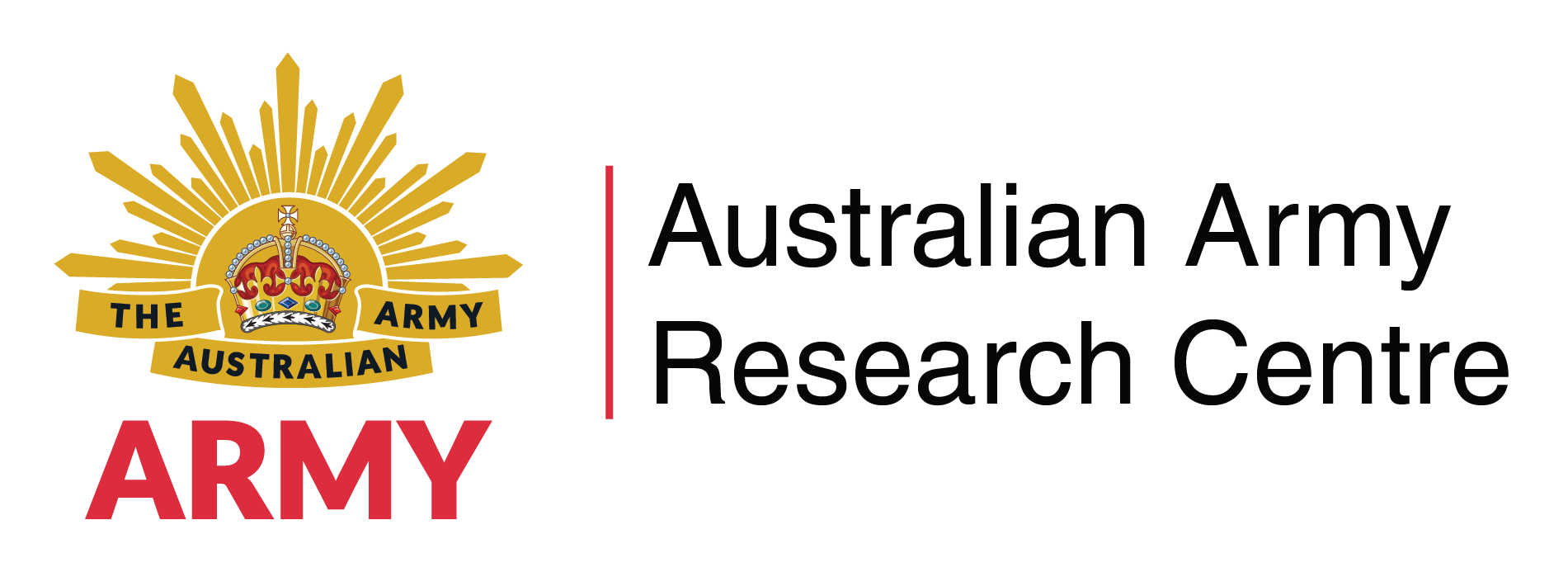Search
Using the filters to the left, click your selection, it will become bold and filter the results, click it again to remove that filter.
Abstract Conflict in arid and austere environments presents many challenges for sustaining a deployed force over long distances. The Australian Defence Force (ADF) has a long and continuous history of working with animals, all providing companionship and support in the harsh working environment; and, by fate, we are custodians of the last great herd of wild camels. The reintroduction of animal transportation may present opportunities for innovative patrolling and transportation options for our Indigenous …
Abstract One of the essential requirements for Army training is the creation of a contemporary and relevant training adversary which allows tactics, techniques and procedures to be tested and weapons and equipment to be evaluated. This is an important part of Army’s value proposition to government that it can provide directed capability. In most cases, the training adversaries developed by the Australian Army in the past have represented opponents the Army was actually fighting or generic opponents it was …
Abstract Toxic leadership, and the management of toxic leadership, remains a significant challenge for militaries and public service agencies around the world. The focus of management activity is typically on identifying and removing the toxic leader. By comparison, there is little discussion of how best to manage a workforce that has survived toxic leadership. Part of the reason for this is an assumption that removal of the toxic leader is an end in itself. However, an ethical analysis of this and other …
Abstract The 2016 Defence Industry Policy Statement (DIPS) emphasises that ‘Australia’s defence industry is essential to the operations of the Australian Defence Force (ADF) and to the capability we need to protect Australia and our national interests’. 1 This is an admirable and logical aim, and perhaps it is actively progressing in the larger Defence–industry partnerships that build ships, submarines and armoured vehicles. However, for addressing the challenges of the individual soldier, the Defence and …
Abstract In an era of fiscal constraint and competing priorities across and external to the Defence portfolio, Army modernisation efforts are challenged by a number of financial and capability pressures. Ranging from the increased cost of technological sophistication in our equipment to the exclusion of capability replacements under the Defence Integrated Investment Program (IIP), these challenges have a dual and compounding impact on Army’s modernisation. Future equipment may consequently be inadequately …
Abstract In May 2017, Islamist insurgents laid siege to the city of Marawi in the Mindanao region of southern Philippines. This siege led to a five-month campaign by the Armed Forces of the Philippines (AFP) to retake Marawi and restore order to the region. The experiences of the AFP have broad relevance to the Australian Army across a number of corps and disciplines, including close combat, offensive support, mobility and survivability, urban sniping and counter-sniping, and logistics. The aim of this …
Abstract This article invites readers to contribute to a professional debate about the capability required for urban operations: does Australia have it—and does Australia need it? In exploring what that might mean, it starts from an accepted position that urban operations are increasingly likely. It examines in some detail the nature of the limitations imposed on military operations by urban terrain, which is particularly important in understanding the dependence on the use of firepower to conduct …
Abstract On the surface, the ‘zero tolerance’ policy of the Australian Defence Force (ADF) on substance abuse appears to be overbearing and paternalistic—out of step and out of touch in an age when individuals feel that they should be able to make informed decisions about what they do and what substances they put in their bodies. Examination of media releases, official statements, policies and freedom of information documents available through Defence or in open media in relation to drug use in the …
Abstract Terrorist threats are evolving globally, and nations are grappling with the traditional division between civil and military affairs in their responses to what have essentially become paramilitary actors. Although Australia has largely been spared the extremes of domestic terror, such as events in Mumbai (2008), Paris (2015) and Nairobi (2019), the 2014 Lindt Café siege in Sydney highlighted the challenges Australian forces face in dealing with this developing dichotomy. This article draws on the …
Abstract This piece investigates the relationship between coastal, littoral, estuarine and riverine (CLEAR) environments and the conduct of Australian Army operations. Exploring the operational importance of these environments within the Indo-Pacific, it demonstrates the need for Army to fight and sustain itself in these areas to achieve Australia’s strategic defence objectives. Using historical examples to demonstrate the integral role played by watercraft in facilitating the manoeuvre and resupply of …
